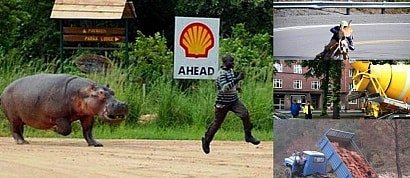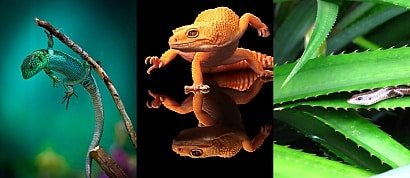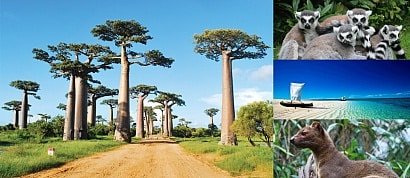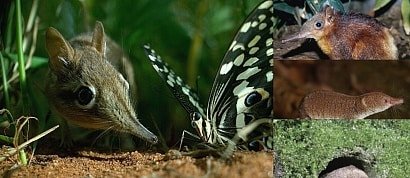A list of my favorite images of pangolins.
en.wikipedia.org/wiki/Pangolin
A pangolin (also referred to as a scaly anteater or trenggiling) is a mammal of the order Pholidota. The one extant family, Manidae, has one genus, Manis, which comprises eight species. A number of extinct species are also known.
A pangolin has large keratin scales covering its skin and is the only known mammal with this adaptation. It is found naturally in tropical regions throughout Africa and Asia.
The name pangolin comes from the Malay word pengguling, meaning "something that rolls up".
The physical appearance of a pangolin is marked by large, hardened, overlapping plate-like scales. The scales, which are soft on newborn pangolins but harden as the animal matures, are made of keratin, the same material of which human fingernails and tetrapod claws are made.
The pangolin's scaled body is comparable to a pine cone or globe artichoke. It can curl up into a ball when threatened, with its overlapping scales acting as armour and its face tucked under its tail. The scales are sharp, providing extra defense. The front claws are so long they are unsuited for walking, so the animal walks with its fore paws curled over to protect them.
Pangolins can also emit a noxious-smelling acid from glands near the anus, similar to the spray of a skunk. Pangolins, though, are not able to spray this acid as skunks do. They have short legs, with sharp claws which they use for burrowing into termite and ant mounds, as well as climbing.
The size of pangolins varies by species, ranging from 30 to 100 centimetres (12 to 39 in). Females are generally smaller than males.
The tongues of pangolins are extremely elongated and extend into the abdominal cavity. By convergent evolution, pangolins, the giant anteater, and the tube-lipped nectar bat all have tongues that are not attached to their hyoid bone and extend past their pharynx deep into the thorax. This extension lies between the sternum and the trachea. Large pangolins can extend their tongues as much as 40 centimetres (16 in), with a diameter of only 0.5 centimetres (0.20 in).
Pangolins are nocturnal animals who use their well-developed sense of smell to find insects. The long-tailed pangolin also is active by day. Other species of pangolins spend most of the daytime sleeping, curled up into a ball.
Arboreal pangolins live in hollow trees, whereas the ground dwelling species dig tunnels underground, to a depth of 3.5 metres (11 ft). Pangolins are also good swimmers.
Pangolins are insectivorous. The bulk of their diet consists of various species of ants and termites and may be supplemented by other insects, especially larvae. They are somewhat particular and tend to consume only one or two species of insects, even when many species are available to them. A pangolin will consume an average of 140 to 200 g (4.9 to 7.1 oz) of insects per day.
Pangolins have a very poor sense of vision, and therefore rely heavily on smell and hearing. After locating their prey, they tear open the anthills or termite mounds with their powerful front claws. Their front claws are so large that their anterior feet are not useful for walking.
The animal uses its long tail to counterbalance its torso as it walks on its two hind legs. After tearing open the ant or termite mound, it uses its long tongue to probe inside the insect tunnels and retrieve its prey. They have glands in their chests to lubricate the tongue with sticky, ant-catching saliva. The tongue extends all the way into a cavity of the abdomen and is longer than the pangolin's entire body length. Pangolins lack teeth and, therefore, the ability to chew, however, they ingest small stones while foraging, which accumulate in the muscular stomach and help to grind up ants.
Some species, such as the tree pangolin, use their strong, prehensile tails to hang from tree branches and strip away bark from the trunk, exposing insect nests inside.
Pangolins are solitary and meet only to mate. Males are larger than females, weighing up to 50% more. While there is no defined mating season, they typically mate once each year, usually during the summer or fall months. Rather than the males seeking out the females, males mark their location with urine or feces and the females will find them. If there is competition over a female, the males will use their tails as clubs to fight for the opportunity to mate with her.
Gestation lasts for approximately 120–150 days. African pangolin females usually give birth to a single offspring at a time, but the Asiatic species may give birth from one to three. Weight at birth is 80 to 450 g (2.8 to 15.9 oz) and the average length is 6 inches (150 mm).
At the time of birth, the scales are soft and white. After several days, they harden and darken to resemble those of an adult pangolin. During the vulnerable stage, the mother stays with her offspring in the burrow, nursing it, and will wrap her body around it if she senses danger. The young cling to the mother's tail as she moves about, although in burrowing species, they remain in the burrow for the first two to four weeks of life. At one month, they first leave the burrow riding on the mother's back.
Weaning takes place at approximately three months of age, at which stage the young begin to eat insects in addition to nursing. At two years of age, the offspring are sexually mature and are abandoned by the mother.
Added to
People who voted for this also voted for
When I was 32... book diary, May/June 2015
Vanessa Redgrave - Favorite Movies
Ernest Hemingway in Movies
Oops, Part 5; A Bad Day...
"La Domenica del Corriere"_15
Card Games in Movies I
♫ Genesis - My Favorite
Actresses And Models_17_1930s, 1940s, 1950s, 1960s
When I was 32... book diary, Sep/Oct 2015
Georges Delerue - French Composer
Movies set in the 1940s
Mother, Son/Daughter - Academy Nominated
Mars in movies
The Evolution of Beren Saat
♫ A little bit of '98
More lists from kathy
My Reptile Collection
Favorite Images of Dogs & Puppies #10
Favorite Images of Badgers
Favorite Lists #7
Favorite Images of Shrews #1
Favorite Fictional Dragons
Favorite Childhood Magazines
 Login
Login
































































